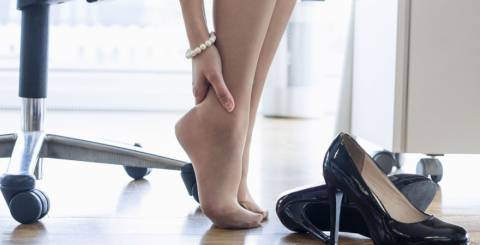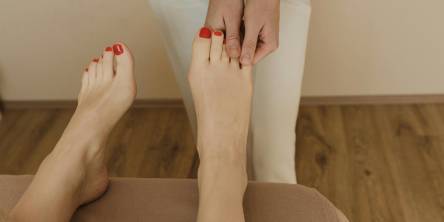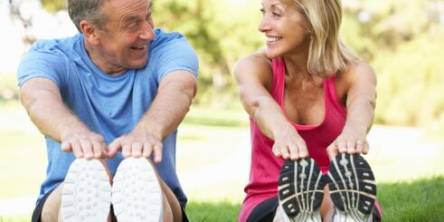8 Ways Wearing Ill-Fitting Footwear Might Harm Your Knees

Shoes may round off your look, but wearing a pair that doesn't really fit you might cause major harm to your knees over time. Here are eight ways that wearing the wrong shoes might harm your knees, along with a list of shoes that are known to aggravate certain knee conditions.
1. Fallen arches
The arches in your feet might collapse if you lack proper support for your feet. Chronic foot pain brought on by arch issues might lead to improper gait. Your knees may get sore if you have to walk while also trying to support your achy feet. Shoes with little internal support, such as flip-flops, are frequently to blame for collapsed arches.
2. Too much stress
The worst footwear for your feet is generally the air that's the most formal. Particularly with stiletto heels, your entire body is thrown out of alignment, which increases the pressure put on your knees. Even low-heeled pumps can increase the stress put on your knees. Hence, try wearing heels only on special occasions.
3. Instability
Your feet are the first aspect essential for strong lower body mobility. Your ankles and knees don't have enough support when your shoes are poor-fitting. Your knees may start to bend abnormally and become unstable if there isn't any support.
Support is crucial, particularly while engaging in physical activities. Wear athletic shoes with lots of internal support, sturdy heel cups, and side posts that support the ankle whether jogging, participating in sports, or even just standing for extended periods.
4. Lower body fatigue
It might be painful for your feet if you wear the wrong shoes. You alter your gait once your feet start to hurt. Your knees may become fatigued as a result of this change, increasing your risk of suffering an acute knee injury. Any ill-fitting shoe can cause lower body discomfort, but flip-flops are especially prone to it.
5. Misalignment
Your knees must remain in appropriate alignment with your hips and feet in order for them to work effectively. Your knees have to work harder because of shoes that alter your body's alignment.
For instance, wearing high heels causes your feet's angle to shift, which forces your weight forward. Your knees remain cramped as a result of this imbalance, which also continuously pressures your kneecap.
6. Overpronation
Overpronation means that every time you take a step, your knee and leg will pronate excessively. The tension of this twisting action puts strain on the knees, which increases the risk of pain, ligament tears, and other severe ailments.
To ensure that your foot looks forward as it should, choose footwear with a sturdy midsole. Discuss overpronation treatment with a podiatrist or knee specialist if you noticed uneven wear on the soles of your footwear.
7. Shortened gait
Your joints, particularly your knees, are normally at their healthiest when you walk freely. Your gait inevitably shortens if you have to plan each step due to the shoes you are wearing. Lower body weariness might be exacerbated by a shorter gait.
One of the most frequent causes of gait shortening is wearing sandals. You're wearing the incorrect sandals if you have to pinch your toes together to keep them on or move in a certain manner to keep the shoes from slipping.
8. Tendon strain
Knee strains may be relatively minor or they can damage the nearby tendons. Tendon strain is a long-term factor in many knee problems, including persistent pain. Tendon strain can occur with any footwear that puts your foot into an odd position.
If you experience knee pain, start by checking whether your shoes are the problem, particularly if you lead an active lifestyle or spend a lot of time on your feet at work.
Need help choosing better footwear or quality inserts? Consult an experienced podiatrist. They diagnose and address knee issues, including those brought on by a tendency for wearing uncomfortable footwear. They can assist you in making sure that the shoes you select strengthen rather than weaken your knees.
Similar Articles
If your knees have recently started sounding like a bowl of Rice Krispies (snap, crackle, pop!) every time you stand up, congratulations — you're officially living the adult experience.
Search engine optimization (SEO) may help physical therapists improve their online exposure and drive more visitors to their website.
You're sitting at home with two completely different treatment plans from two doctors you trust.
When conservative therapy fails, surgery may be required to alleviate chronic foot or ankle discomfort.
Your body changes with time - muscles and bones shift, ligaments loosen, and circulation may slow. Unfortunately, the aging process has an impact on our feet as well.
Back problems aren't just discomfort or temporary back pain. Many of them can be extremely dangerous and lead to serious complications if you don't seek medical attention on time.
Sciatica is a condition in which the sciatic nerve, the longest nerve in the human body, becomes irritated or pinched
Irritable bowel syndrome (IBS) is a dysfunction of the gastrointestinal tract that manifests as abdominal pain, bloating, flatulence, and intestinal discomfort (constipation, diarrhea, or a combination of both.
Peripheral neuropathy is when the nerves outside your brain and spinal cord—called peripheral nerves—aren’t working the way they should.









